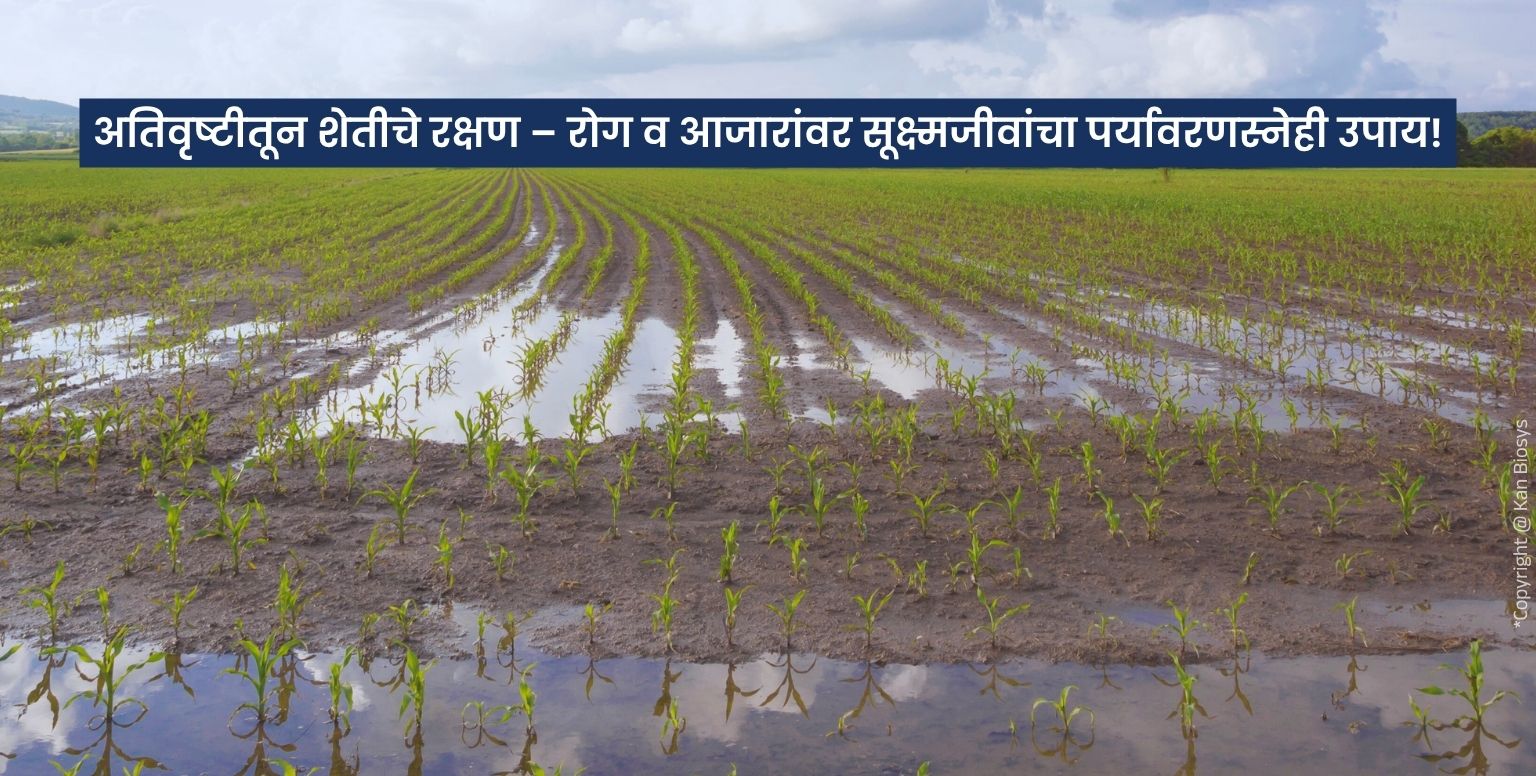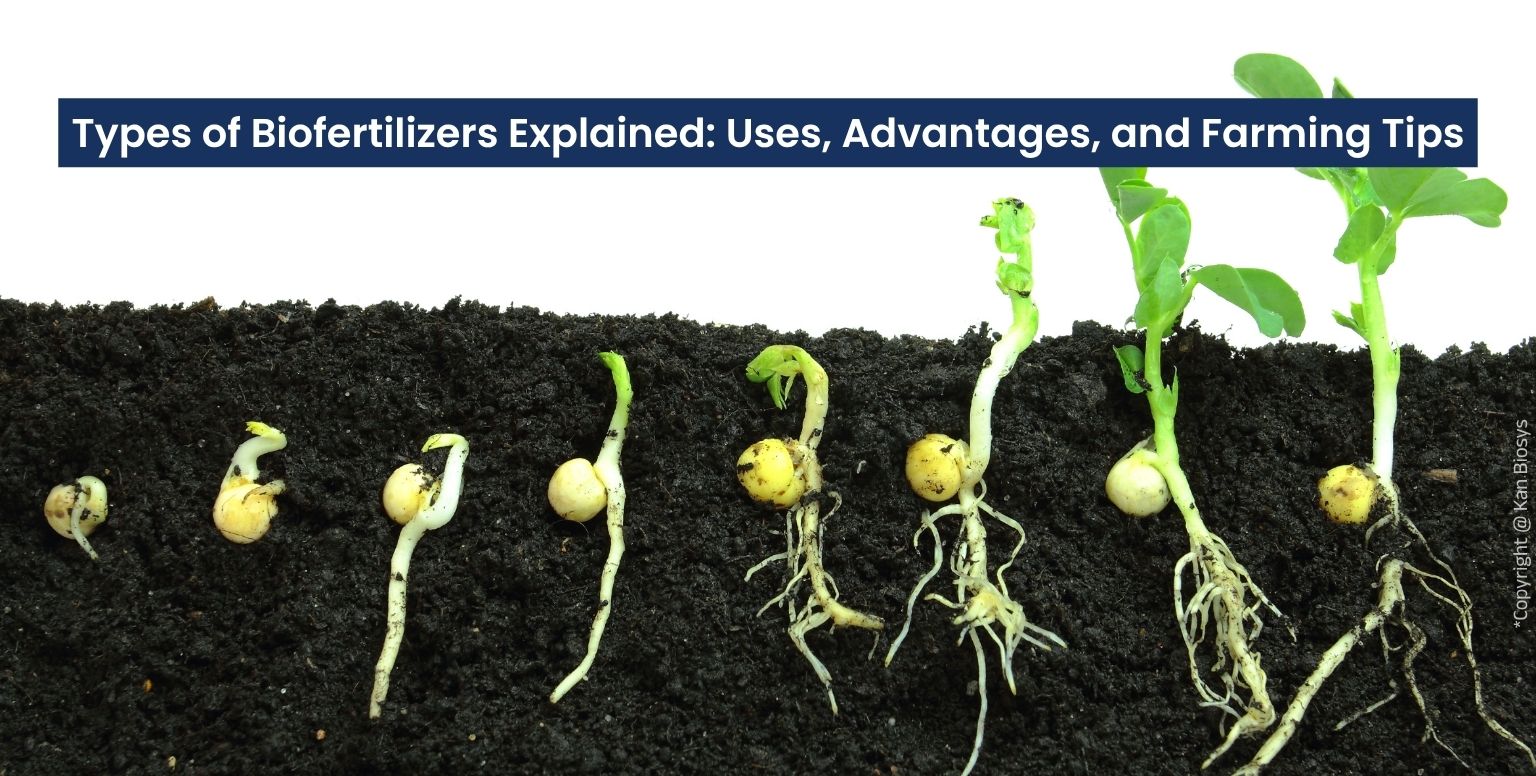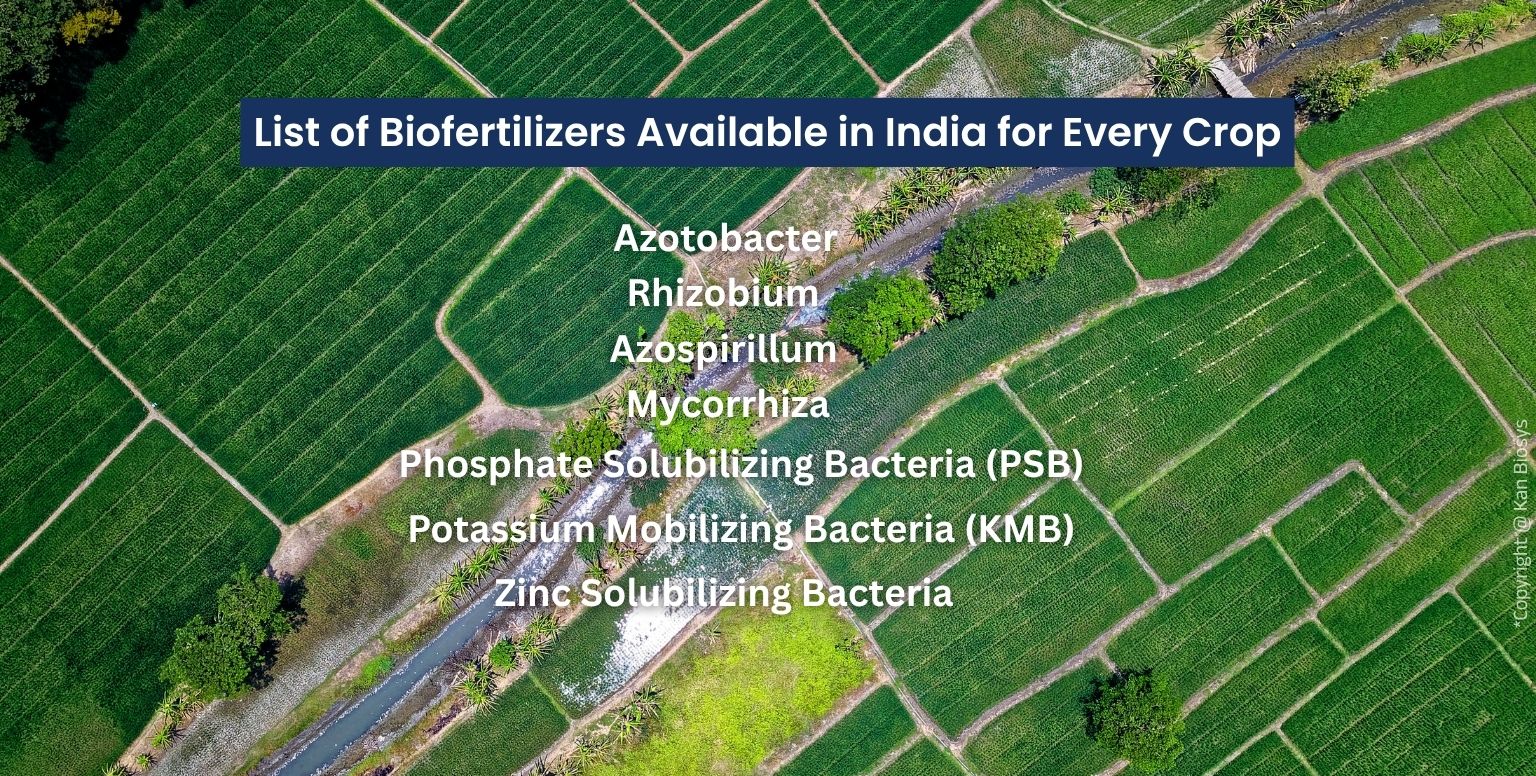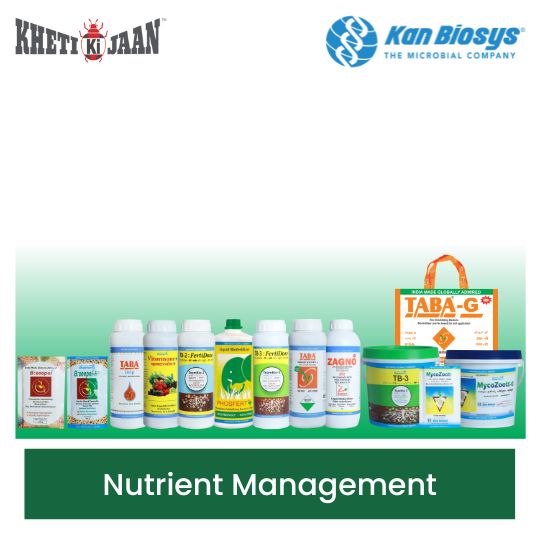Everything You Need to Know About Biofertilizers: Types, Benefits, and Uses
Everything You Need to Know About Biofertilizers: Types, Benefits, and Uses
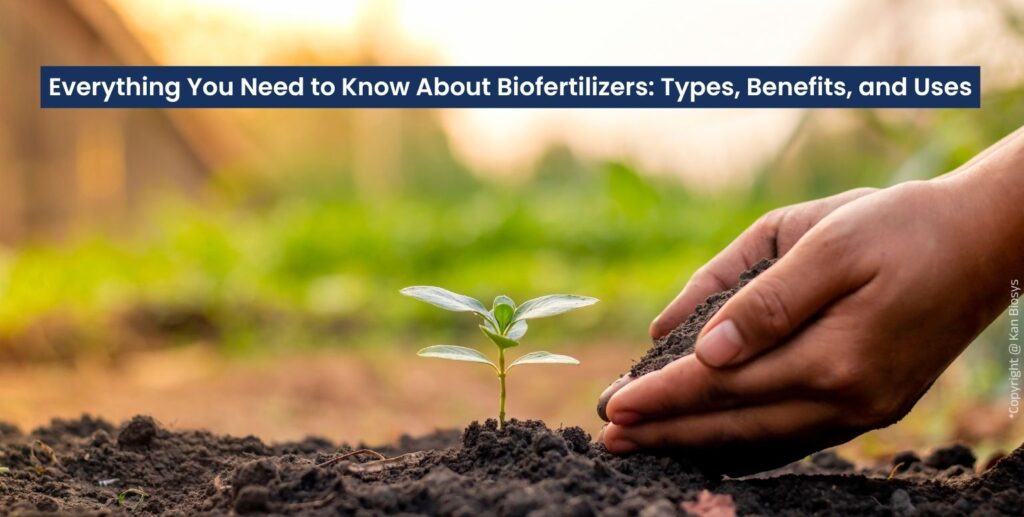
Modern agriculture is undergoing a paradigm shift — one that prioritizes sustainability, soil health and regeneration, and reduced dependence on fertilizers and pesticides. Farmers across the globe are shifting toward more eco-friendly and cost-effective alternatives, and biofertilizers stand at the heart of this revolution.
This article explores what biofertilizers are, their types, benefits, and practical uses in today’s farming systems. You’ll discover how these natural, microbial solutions not only improve crop yields but also restore soil vitality, sequester soil carbon, and support long-term agricultural balance.
As the world faces the twin challenges of food insufficiency and environmental degradation, understanding the role and importance of biofertilizers has become essential. These living soil rejuvenators represent a future where productivity and sustainability go hand in hand — helping farmers produce more with limited land resources, while caring for the planet.
What Are Biofertilizers?
Biofertilizers are natural formulations containing living microorganisms—tiny beneficial bacteria, fungi, and algae—that enrich the soil and promote plant health and growth. These microorganisms live around the plant roots (the rhizosphere) and mobilize nutrients like nitrogen, phosphorus, and potassium, making them available to the plants. In simple terms, they don’t just feed the plant — they nurture the soil itself.
How Biofertilizers Differ from Other Fertilizers
- Chemical Fertilizers: These provide nutrients in ready-to-use chemical form, giving crops an instant boost. However, they often get overused and degrade soil health over time. In contrast, the microbes in biofertilizers mobilize and make available the nutrients to the plants, increasing their use efficiency, improving soil structure and biological activity naturally, reducing nutrient imbalance and excess chemical fertilizer residues.
- Organic Fertilizers: Organic fertilizers like compost or manure add carbon-rich nutrients derived from plant and animal matter. While they improve soil organic content, they lack active microbes. Biofertilizers, however, contain living organisms that multiply and continuously enhance soil fertility by mobilizing the nutrients to the plants.
- Bio-Organic Fertilizers: These are a hybrid of the two — combining organic matter (as a nutrient base) with microbial cultures. In other words, bio-organic fertilizer = organic matter + biofertilizer microbes, providing both nutrition and biological activity.
Why Biofertilizers Are Gaining Global Attention
The growing demand for sustainable farming practices has placed biofertilizers in the spotlight. They are renewable, environmentally safe, and cost-effective, helping reduce the dependency on synthetic inputs. With governments and agricultural bodies promoting eco-friendly practices, the global biofertilizer market is projected to grow steadily in the coming years, valued at over USD 2.5 billion by 2030 (Source: MarketsandMarkets).
In essence, biofertilizers are more than just plant supplements — they are the foundation of a regenerative and sustainable agricultural future.
Types of Biofertilizers
Biofertilizers are broadly classified based on the microorganisms they contain or the specific nutrients they help plants absorb. Each type plays a unique role in supporting soil fertility and plant growth. Below are the main categories farmers and agronomists use in sustainable crop management.
1. Nitrogen-Fixing Biofertilizers
Nitrogen is one of the most essential nutrients for plants, yet most crops can’t use atmospheric nitrogen directly. Nitrogen-fixing biofertilizers contain microorganisms that convert atmospheric nitrogen into plant-usable forms like ammonia and nitrates.
Common examples:
- Rhizobium – Works symbiotically with legume crops such as peas, beans, chickpeas, and soybeans by forming nodules on roots.
- Azotobacter – A free-living bacterium ideal for cereals, vegetables, and non-leguminous crops.
- Azospirillum – Associates with plant roots and stimulates root growth in crops like maize, wheat, and sugarcane.
These biofertilizers improve soil nitrogen naturally, reducing the need for synthetic nitrogen fertilizers.
2. Phosphate-Solubilizing Biofertilizers (PSB)
Phosphate (a compound containing Phosphorus) is vital for strong roots, flowering, and fruiting, but much of it remains locked in insoluble forms in the soil. Phosphate-solubilizing microorganisms (PSMs) like Bacillus, Pseudomonas, Aspergillus, and Penicillium convert these fixed forms into soluble phosphate that plants can easily absorb and use.
Using PSB biofertilizers boosts root growth, enhances nutrient uptake, and improves overall plant vigor — especially in soils with low phosphorus availability.
3. Potassium-Mobilizing Biofertilizers
Potassium is often called the “quality nutrient” because it enhances crop resilience, water regulation, and fruit quality. Potassium-mobilizing biofertilizers contain bacteria such as Bacillus mucilaginosus and Frateuria aurantia that release potassium from mineral-bound forms.
They not only reduce the need for chemical potash fertilizers but also improve drought tolerance and disease resistance in crops.
4. Mycorrhizal Biofertilizers (Fungal)
Mycorrhizae are symbiotic fungi that form associations with plant roots, creating a vast network of filaments that act as extensions of the root system and also establish an underground plant-to-plant communication system called the wood wide web.
Arbuscular Mycorrhizal Fungi (AMF), such as Glomus and Rhizophagus species, are the most common in biofertilizer formulations. They significantly increase the uptake of phosphorus, zinc, and water, especially in horticultural, forestry, and plantation crops. Mycorrhizae also enhance plant tolerance to drought and soil-borne diseases, making them ideal for long-term soil health.
5. Cyanobacterial Biofertilizers
Also known as Blue-Green Algae (BGA), these are photosynthetic microorganisms capable of fixing atmospheric nitrogen in flooded conditions. They are primarily used in paddy cultivation and can add 20–30 kg of nitrogen per hectare per season naturally.
Species such as Anabaena and Nostoc enrich the soil while improving organic matter content and microbial diversity — perfect for sustainable rice farming.
6. Plant Growth-Promoting Rhizobacteria (PGPR)
PGPRs are beneficial bacteria that colonize plant roots and stimulate growth through multiple mechanisms. They:
- Produce plant hormones like auxins and cytokinins that enhance root development.
- Suppress soil pathogens through natural antibiotic production.
- Improve nutrient uptake and stress tolerance.
Pseudomonas fluorescens, Bacillus subtilis, and Enterobacter species are common PGPR strains used in integrated nutrient management programs.
7. Bio-Organic or Composite Fertilizers
Bio-organic fertilizers combine organic matter (such as compost or vermicompost) with a consortium of beneficial microorganisms. This blend offers the dual benefits of nutrient supply and microbial activation.
Composite fertilizers are gaining popularity because they improve soil fertility holistically — balancing physical, chemical, and biological properties of the soil. They are suitable for all crop types and compatible with most organic farming systems.
Benefits of Biofertilizers
Adopting biofertilizers is more than just a farming decision — it’s a shift toward a healthier, more balanced ecosystem. These living soil enhancers bring together the best of science and nature to create lasting benefits for crops, soil, and the environment. Below are some of the key reasons they’re transforming modern agriculture.
1. Enhances Soil Fertility Naturally
Biofertilizers improve soil fertility through biological nitrogen fixation, phosphate solubilization, and micronutrient mobilization. The beneficial microbes replenish essential nutrients while maintaining soil biodiversity — turning the soil into a living, self-sustaining ecosystem rather than a mere growth medium.
2. Improves Plant Growth and Yield
Many bioorganic fertilizers contain bacteria and fungi that produce natural growth-promoting hormones such as auxins, gibberellins, and cytokinins. These substances stimulate root elongation and enhance nutrient uptake. The outcome is visible — stronger root systems, greener foliage, and higher, more stable yields.
3. Eco-Friendly and Sustainable
Because they are made with living organisms, biofertilizers become part of the natural environment. They restore ecological balance by reducing chemical pesticide runoff, greenhouse gas emissions by reducing the use of synthetic fertilizers, and eliminating long-term soil toxicity. For farmers embracing sustainability, they represent an easy, impactful first step toward greener and more sustainable agriculture.
4. Cost-Effective Solution for Farmers
Once introduced, beneficial microbes multiply and continue improving soil fertility. This biological efficiency means less use of expensive synthetic inputs. Over time, farmers save on input expenses while maintaining consistent yield and quality — a true balance of productivity and profitability.
5. Improves Soil Structure and Water Retention
The microbial activity stimulated by biofertilizers enhances soil aggregation and porosity. Better soil structure allows roots to penetrate deeper, retain moisture longer, and access nutrients more effectively. This is particularly valuable in drought-prone areas, where water retention can make the difference between survival and success.
6. Supports Organic Farming Practices
Biofertilizers integrate seamlessly into organic and natural farming systems. They complement compost, farmyard manure, and other organic inputs without disrupting certification standards. Their biological origin and residue-free nature make them ideal for growers who want to increase output while staying true to sustainable principles.
A Step Toward Smarter, Greener Farming
The global movement toward sustainable agriculture is being shaped by innovations like biofertilizers — where microbiology meets cultivation. Indian companies such as Kan Biosys are at the forefront of this transformation, developing high-quality microbial formulations that help farmers rebuild soil health and increase productivity responsibly.
By adopting biofertilizers, farmers aren’t just improving today’s harvest — they’re nurturing the soil for future generations.
How to Use Biofertilizers – Application Methods
Using biofertilizers correctly is just as important as choosing the right one. Because these products contain living microorganisms, proper handling and application are essential to ensure that the microbes stay active and effective once they reach the soil or plant roots. When used correctly, biofertilizers can significantly enhance nutrient availability, root health, plant growth, and crop yield.
Understanding Biofertilizer Forms
Before application, it’s important to know that biofertilizers are available in several formulations—each suited to different crops and farming conditions.
- Solid or Powder-Based (Carrier-Based)
These are dry formulations containing microbes mixed with carriers like peat, lignite, or compost. They are most commonly used for seed treatment and soil application. - Liquid Biofertilizers
These are concentrated liquid formulations with high microbial counts and longer shelf life. They can be used through drip irrigation, foliar spray, or root dipping and are easy to mix with other organic inputs. - Granular or Pelletized Versions
These are solid granules containing a blend of beneficial microorganisms and organic carriers. Farmers can apply them directly to the soil during planting or mix them with compost for uniform nutrient distribution.
Each type has its advantages — but in all cases, proper application ensures that the living microbes establish themselves effectively in the rhizosphere (root zone).
Methods of Application
1. Seed Treatment or Seed Dressing
This is the most common and effective way to introduce biofertilizers to plants.
How to use: Mix the biofertilizer (powder or liquid) with a small quantity of water or jaggery solution to form a slurry. Coat the seeds evenly and let them dry in the shade before sowing.
When to apply: Just before planting. Treated seeds should be sown within 24 hours.
Why it works: The microbes colonize the seed surface early, ensuring quick root association and better nutrient uptake from the start. They also help in resisting soil-borne diseases during germination.
2. Soil Application
Ideal for carrier-based and granular biofertilizers, this method ensures a widespread distribution of beneficial microbes.
- How to use: Mix the biofertilizer with compost or well-decomposed farmyard manure (FYM) at a ratio of about 5–10 kg biofertilizer per hectare. Apply the mixture evenly across the field before the last plowing or at sowing.
- Tip: Always apply in moist soil and avoid direct sunlight exposure immediately after spreading, as heat can reduce microbial viability.
3. Root Dipping (for Transplanted Crops)
Used for crops like rice, sugarcane, vegetables, and fruit saplings.
How to use: Prepare a suspension of biofertilizer in water (usually 1–2 liters of liquid formulation in 10–15 liters of water). Dip the roots of seedlings or cuttings for about 30 minutes before transplanting.
Benefit: This ensures direct microbial colonization on root surfaces, promoting quick establishment and growth in the new soil environment.
4. Foliar Spray
A convenient method for liquid biofertilizers and PGPR-based formulations.
How to use: Dilute the product as per the label instructions and spray uniformly over the leaves using a knapsack or tractor-mounted sprayer.
When to apply: During early vegetative growth or when crops show signs of stress.
Why it works: Certain microbial strains can enter through leaf pores, improving nutrient absorption and plant health.
Best Practices for Effective Use
- Apply biofertilizers in moist soil for maximum microbial survival.
- Avoid mixing biofertilizers directly with chemical fertilizers or pesticides. Apply them separately, leaving at least a few days’ gap.
- Store products in a cool, dry place, away from sunlight and heat.
- Always check the expiry date and strain information before use.
- Follow the recommended dosage on the label — more is not always better.
Why Proper Usage Matters
Biofertilizers contain live microbial cells, which means their success depends on survival and colonization in the soil. If exposed to sunlight, extreme heat, or chemicals, these microbes can die before reaching the plant roots, reducing their effectiveness. Correct timing, method, and handling make all the difference between good results and wasted effort.
A Smarter Approach to Application
Farmers who combine scientific precision with biological solutions achieve the best results. Companies like Kan Biosys are helping farmers adopt modern application techniques by offering biofertilizers suited for diverse soil types and crops — from liquid formulations for irrigation systems to carrier-based inoculants for seed coating.
With the right product and the right application, biofertilizers can become a powerful tool in every farmer’s journey toward sustainable, high-yield farming.
Choosing the Right Biofertilizer
Not all soils — or crops — are the same. Every field has its own biological character, nutrient balance, and environmental conditions. That’s why choosing the right biofertilizer isn’t about picking a product at random — it’s about understanding your soil strength and crop needs.
Different crops interact with specific microorganisms, and each soil type supports microbes differently. For example, legumes like chickpea or soybean need nitrogen-fixing bacteria such as Rhizobium, while cereals and vegetables benefit more from Azospirillum or Azotobacter. Similarly, soils low in phosphorus respond best to phosphate-solubilizing biofertilizers, while perennial fruit trees thrive with mycorrhizal fungi that enhance root expansion and nutrient uptake.
Key Factors to Consider When Selecting a Biofertilizer
- Crop Type:
Each crop group — legumes, cereals, vegetables, fruits, or plantation crops — benefits from a specific microbial partner. Matching the biofertilizer type to your crop ensures maximum efficiency. - Soil Health:
Conduct a soil test to understand its texture, pH, and microbial activity. Healthy soils respond faster to inoculants, while degraded or compacted soils may need initial organic matter addition for microbial survival. - Nutrient Gaps:
Identify what your soil lacks.- Low nitrogen → Use Rhizobium, Azospirillum, or Azotobacter.
- Low phosphorus → Apply phosphate-solubilizing microorganisms (PSB).
- Micronutrient deficiencies (Zn, Fe, K) → Choose mobilizing strains.
- Low organic carbon → Opt for bio-organic fertilizers that combine microbes with compost.
- Local Climate and Conditions:
Temperature, rainfall, and soil moisture influence microbial activity. Some strains perform better in humid or tropical climates, while others tolerate arid conditions. Selecting climate-suited formulations improves survival rates. - Farming Practices and Compatibility:
Check if the biofertilizer aligns with your existing methods — for instance, whether you use drip irrigation, organic manure, or integrated nutrient management. Ensure it doesn’t conflict with pesticides or chemical fertilizers used nearby.
Step-by-Step Process to Choose the Right Biofertilizer
- Test Your Soil:
Begin with a professional soil test to measure nutrient levels and identify deficiencies. - Interpret Results:
Pinpoint which nutrients are lacking and what microbial activity looks like in your soil. - Match the Deficiency to the Microbe:
- Nitrogen-deficient? → Go for nitrogen-fixing bacteria.
- Phosphorus-deficient? → Choose PSB or mycorrhizal fungi.
- Low organic activity? → Try composite or bio-organic fertilizers.
- Check Crop Compatibility:
Make sure the microbial strain is recommended for your crop family. For example, Rhizobium japonicum is ideal for soybeans, while Rhizobium leguminosarum suits peas and lentils. - Confirm Product Quality:
Choose products with high viable cell counts (CFU), clear labeling, and verified shelf life. Look for government-approved or certified formulations for guaranteed efficacy. - Apply Correctly:
Follow label guidelines carefully—application method and timing are critical for microbial survival and colonization.
The Kan Biosys Approach
Selecting the right biofertilizer is part science, part experience — and that’s where expertise matters. Kan Biosys, through years of microbiological research and field validation, offers formulations specifically developed for Indian soils, climatic zones, and crop varieties. Each product is tested for microbial compatibility, strain efficiency, and environmental resilience to ensure farmers get consistent, dependable results.
With the right selection and guidance, biofertilizers can do far more than feed your crops — they can rebuild your soil, improve profitability, and make farming naturally sustainable for years to come.
FAQs
1. What is the difference between biofertilizers and chemical fertilizers?
Biofertilizers are natural products containing living microorganisms that enhance nutrient availability to the plants, while chemical fertilizers are synthetic compounds that add nutrients to the soil. The main difference lies in sustainability — biofertilizers improve soil health over time, whereas chemical fertilizers can degrade it with continuous use.
2. What is the need for using biofertilizers?
Biofertilizers are needed to restore the natural fertility of soils that have been depleted by years of chemical overuse. They reduce dependency on synthetic fertilizers, promote microbial diversity, and help crops grow stronger and healthier through natural nutrient cycling.
3. How long does it take for biofertilizers to show results on crops?
Results from biofertilizers typically become noticeable within 2 to 4 weeks after application, depending on crop type, soil condition, and climate. For sustained benefits, consistent use across cropping seasons enhances soil structure, fertility, and yield performance.
4. Can biofertilizers improve soil fertility long-term?
Yes. Biofertilizers help rebuild soil fertility by increasing soil organic matter, microbial activity, and nutrient-holding capacity. Regular use leads to long-term improvements in soil health, reducing the need for chemical fertilizers and ensuring sustainable productivity.
5. How often should biofertilizers be applied to the soil or crops?
Biofertilizers are generally applied once every cropping cycle—either during seed treatment, transplanting, or early plant growth. In some cases, liquid biofertilizers can also be used as foliar sprays during critical growth stages for added benefits. Always follow product-specific guidelines for dosage and frequency.
6. What factors affect the performance of biofertilizers in the field?
Several factors influence biofertilizer performance:
- Soil moisture and pH levels
- Temperature and sunlight exposure
- Presence of organic matter
- Compatibility with chemical fertilizers and pesticides
- Product quality and storage conditions
For best results, apply biofertilizers in moist soil and avoid mixing them directly with strong agrochemicals.
7. How do Kan Biosys products support sustainable and organic farming practices?
Kan Biosys develops biofertilizers using advanced microbial technology that enhances nutrient use efficiency and soil biology naturally. Their products are residue-free, compatible with organic farming systems, and tailored to suit diverse crops and soil types. By improving soil fertility and reducing chemical dependency, Kan Biosys solutions empower farmers to adopt sustainable, climate-smart, and profitable farming practices.
Kan Biosys: Empowering Farmers Through Smart, Sustainable Soil Solutions
Biofertilizers are the foundation of sustainable agriculture — they don’t just feed crops; they rebuild the soil’s natural strength. By restoring microbial life, fixing essential nutrients, and improving soil structure, they help farmers achieve long-term productivity while protecting the environment.
Unlike chemical inputs that offer quick but short-lived results, biofertilizers deliver lasting benefits — they’re cost-effective, eco-friendly, and scientifically proven to enhance crop yield and quality. As agriculture continues to evolve, adopting these natural solutions is not just an option; it’s a necessity for the future of farming.
At Kan Biosys, we believe that healthy soil is the heart of a healthy harvest. Our research-backed biofertilizer formulations are designed to meet the unique needs of different crops and soil types, helping farmers transition smoothly toward more sustainable and profitable cultivation practices.
Whether you’re a large-scale grower or a smallholder farmer, the path to long-term fertility and productivity starts with one choice — bring your soil back to life with Kan Biosys biofertilizers.

